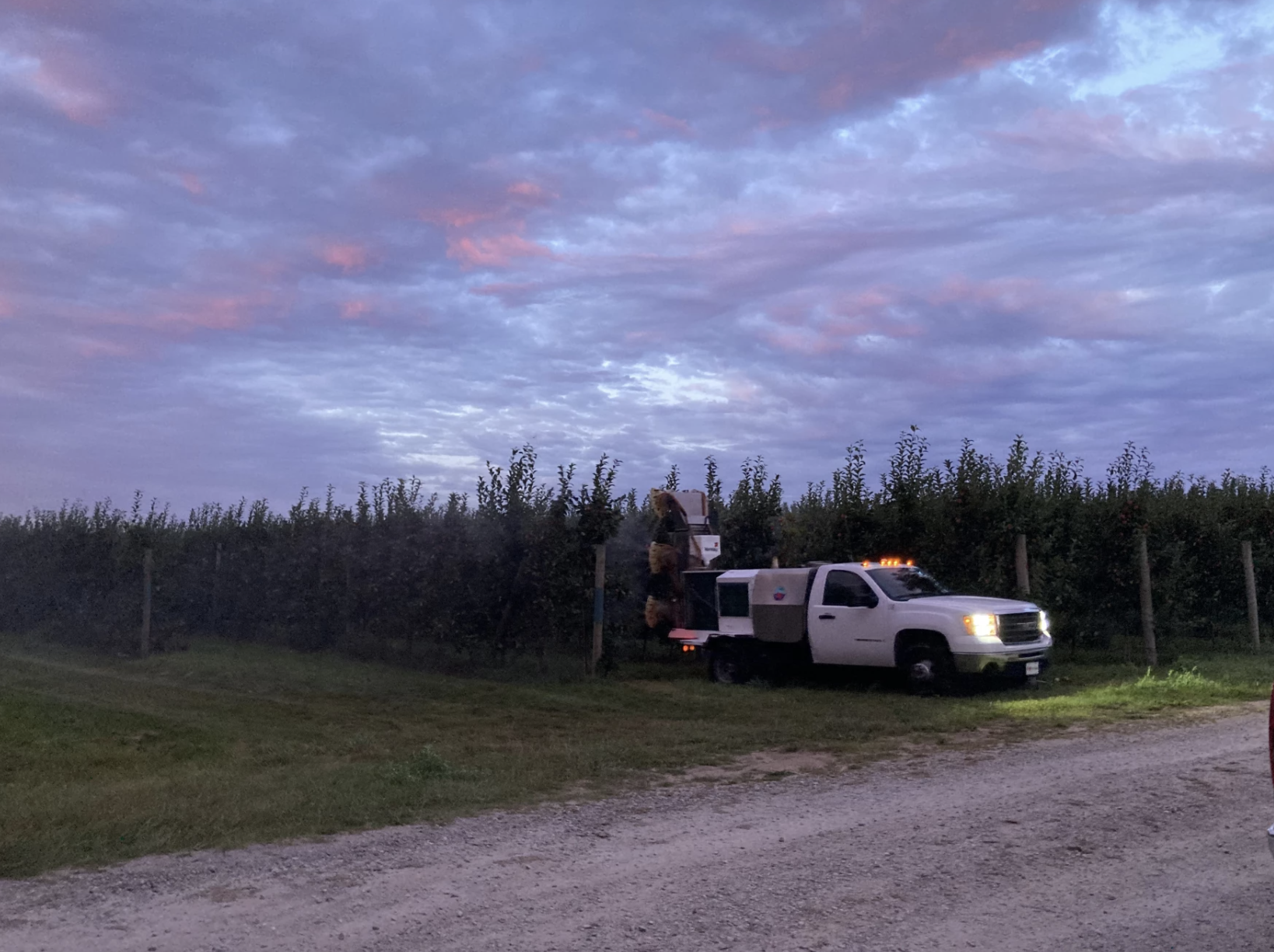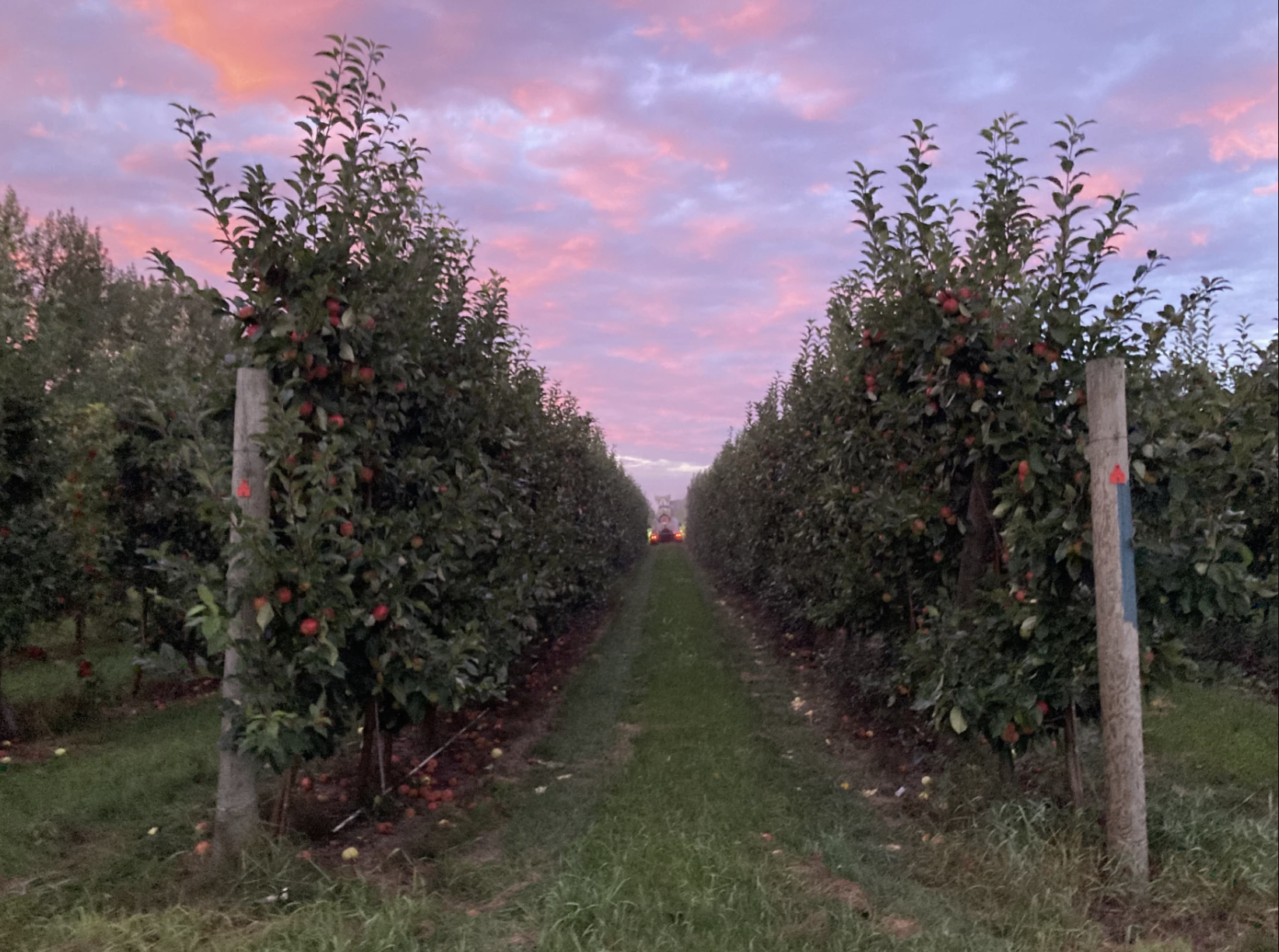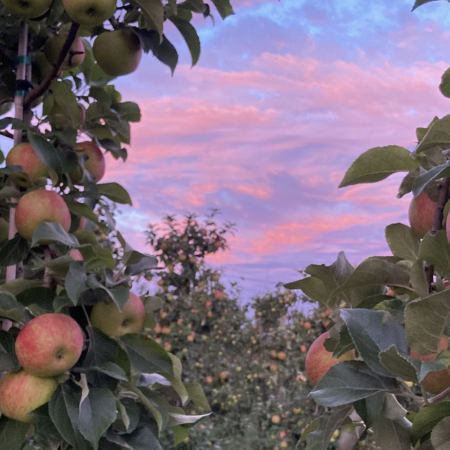Apple growers wallop averages for the third year in a row. What does that mean for the industry?
Michigan growers are on track for a big apple harvest this year for the third year in a row. But tons of apples aren’t always a good thing.
Advances in horticulture research and technology have helped produce mind-boggling amounts of apples year after year.
Last year saw record-breaking apple harvests across the country, according to the U.S. Apple Association.
In Michigan, the banner year drove down prices of certain varieties and created backlogs at packing facilities.
Emma Grant, orchard manager at Cherry Bay Orchards in Suttons Bay, is hoping to get ahead of some of those issues this season.
“We’ve never used this before,” she says, opening up a pail of thick white liquid. “But as there’s more apples in Michigan and the packers are running into longer times to pack, this is something we thought we should try.”
Related: Michigan should have plenty of apples this fall
The liquid is a plant growth regulator; she and her colleagues will mix the concentrate with water, then spray it on a small block of Premier Honeycrisp apple trees as a test.
“Right now, we are spraying this in hopes that we can delay the maturity of the Premier Honeycrisp [apples],” Grant said. “They can get redder on the tree, and then by the time we get through our other apples and pick them, they’re still at a ripeness level that’s ideal for storage.”
The hope is to get these early season apples as red as possible without the fruit over-ripening. That’ll give them a better chance of being picked, stored, packed and eventually sold to consumers.

Why so many apples?
This year’s crop is expected to be big, but lower than last year. Still, researchers say it’s unusual to have three big years in a row like this.
There are a few reasons why.
Researchers in northwest Michigan say growers have benefited from good weather the past few years.
But other top apple states, like Washington and New York, are also pulling big yields.
Chris Gerlach says that’s partially because we’ve planted a lot more apple trees across the country.
“We’ve added about 30, 35,000 apple acres over the last five years,” said Gerlach, who tracks analytics for the U.S. Apple Association, a trade association for the apple industry.
But there’s more to it than that: The way we grow apples has changed.
“You wouldn’t be putting in your grandfather’s apple tree,” Gerlach said. “You wouldn’t be putting in 400 trees per acre that have a huge canopy, that take you a lot of time and effort to get into the tree to prune or to harvest.”
Most growers are transitioning to high density systems. These trellised trees almost look like walls of fruit.
They grow more apples in less space, and they’re much easier to harvest – which needs to be done by hand for apples that are sold fresh. Plus, that fruit is higher quality than ever before, Gerlach said.
So this mind-boggling amount of apples?
“This, indeed, does appear to be the new normal,” he said.
But that new normal isn’t without wrinkles — more apples means lower prices.
Gerlach says some growers lost money because 2023’s record-breaking harvest drove the values of certain varieties so low.
“So, typically, at the end of the season, these apple growers will get a check in the mail. This year, lots of growers were getting bills in the mail because the value of their apples was less than the cost of services.”
-Chris Gerlach, U.S. Apple Association
Alongside high labor costs and other inputs like fuel, growers also have to pay for storing their apples, packing them and subsidize commission for industry salespeople.
“So typically, at the end of the season, these apple growers will take the prices their apples were sold for, minus these costs of services, and they’ll get a check in the mail,” Gerlach said. “Well, this year, lots of growers were getting bills in the mail because the value of their apples was less than the cost of services.”
That’s not sustainable, especially for small- to medium-sized growers — which account for many of northern Michigan’s orchards.
Gerlach said U.S. apple growers are consolidating and seeing more investment from private equity and foreign sovereign wealth funds. He said that trend will only continue as labor costs go up and it becomes more difficult to make money on fruit alone.
Plus, to top it off, he said U.S. consumers are buying fewer apples at the grocery store.
“There’s a lot of competition in the produce aisle these days with grapes, and clementines, and avocados, and other things,” he said. “Some people are talking about what we need to be doing to promote apples as a category, and not just Honeycrisp versus Red Delicious, but apples versus something else.”
Despite that, Gerlach said growers should get a little relief this growing season. It’s shaping up to be a big apple year, but still far fewer apples than last year.

Back at the farm
In Suttons Bay, the plant growth regulator Emma Grant sprayed over a month ago worked as intended: It bought a little more time for some of the apples to turn redder without over-maturing. And the redder the apple, the more appealing it is to packers.
Now, she says she’ll have to wait and see if the same regulator will help the apples keep better in storage before being packed and sold.
It could be close to the start of next apple season by the time that happens.
Trusted, accurate, up-to-date.
WDET strives to make our journalism accessible to everyone. As a public media institution, we maintain our journalistic integrity through independent support from readers like you. If you value WDET as your source of news, music and conversation, please make a gift today.
The post Apple growers wallop averages for the third year in a row. What does that mean for the industry? appeared first on WDET 101.9 FM.
